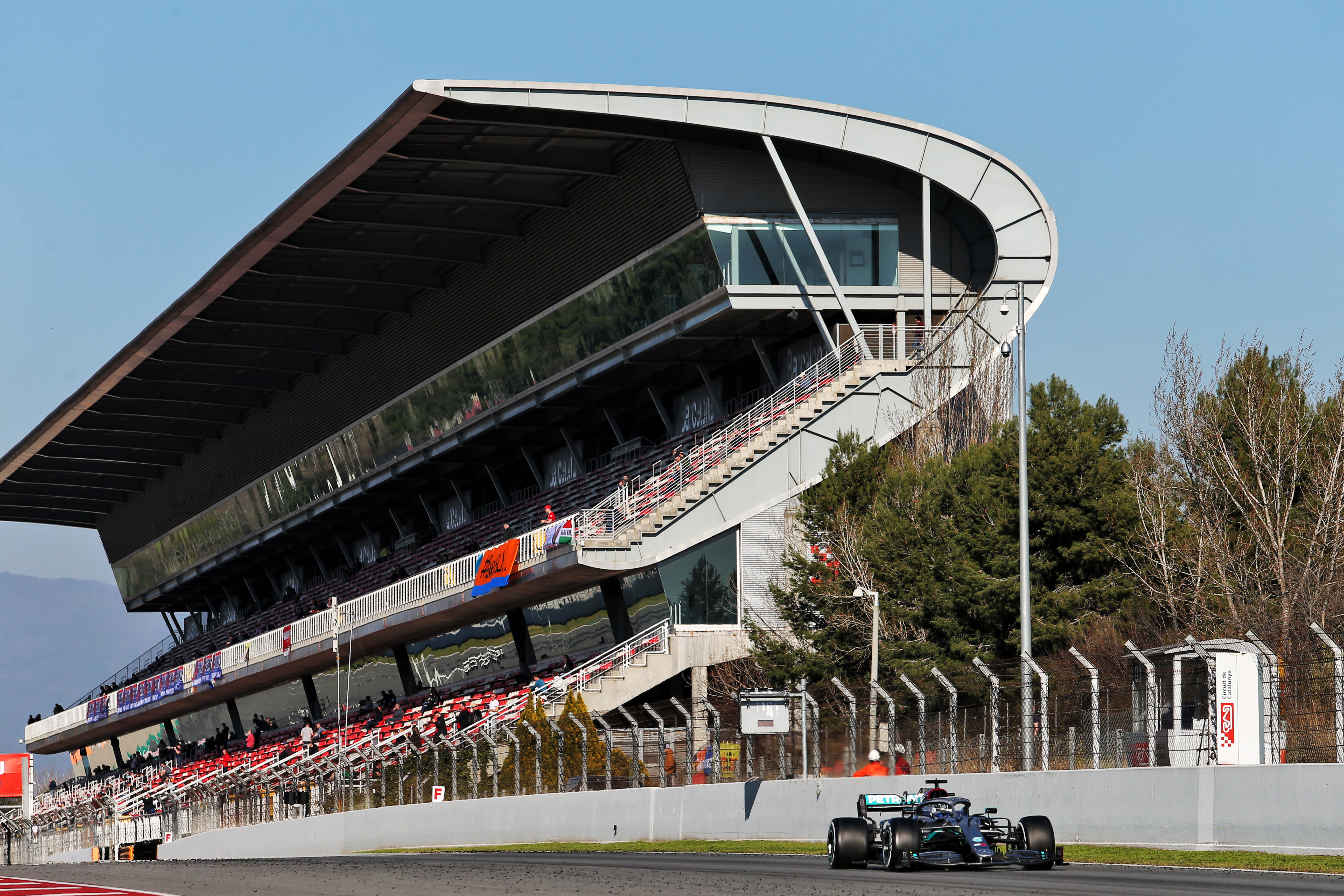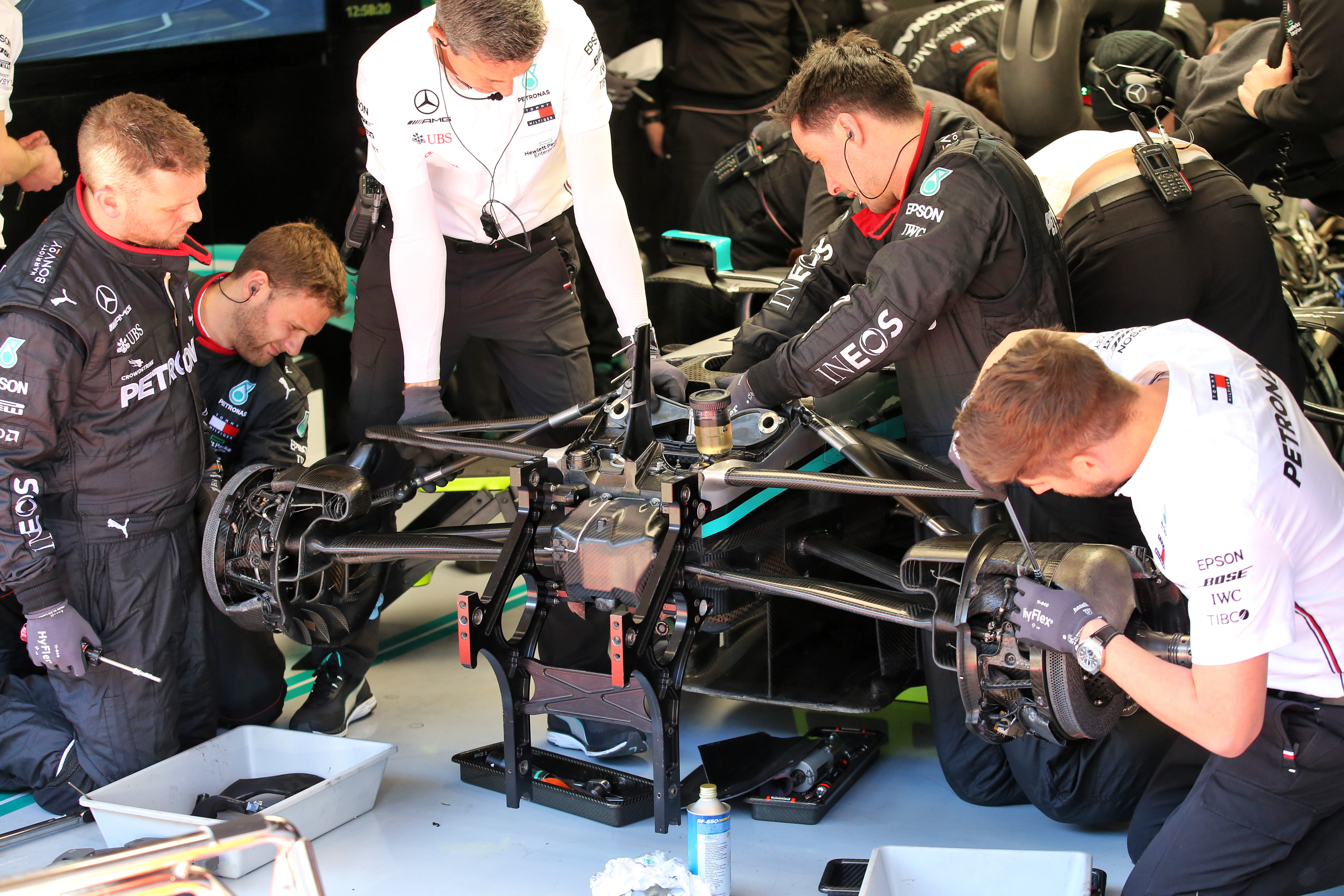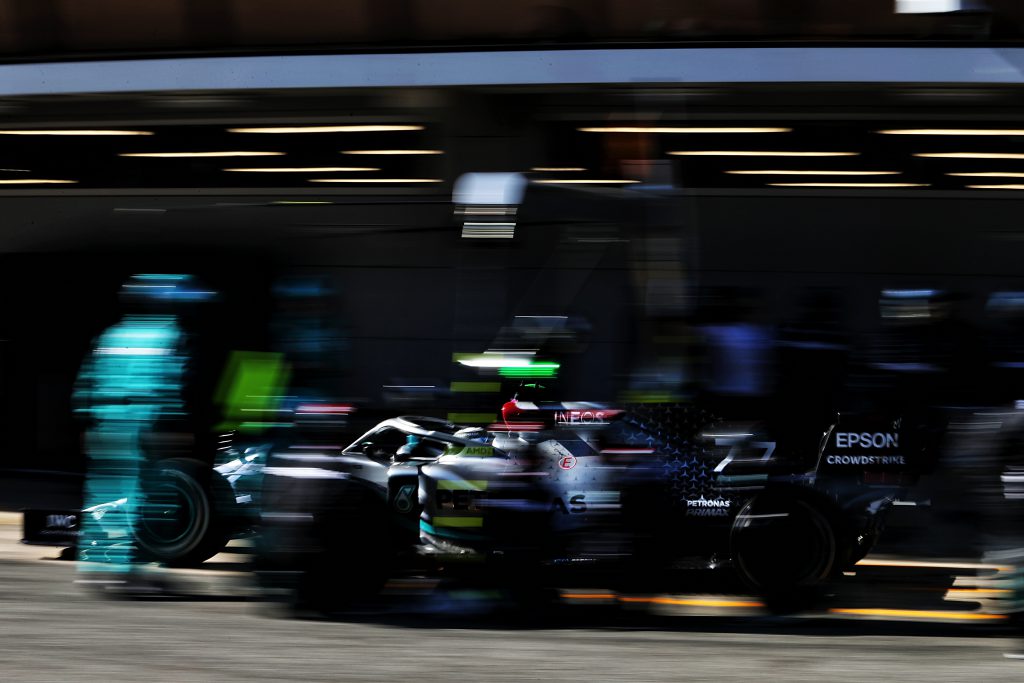Up Next

Mercedes is very good at avoiding the headlines during testing. Normally we can expect the world champion team to get down to business quietly and efficiently. This year looks a little different on the surface.
Across two days at Barcelona Mercedes has already topped the times, something it failed to do through all of testing last year, and then set tongues wagging with a beautifully trick steering system: DAS (dual axis steering) that has dominated the second day in Spain in similar fashion to Mercedes and the last six world championships.
Then, when Valtteri Bottas returned to the garage shortly before a race simulation came to its planned end, those hoping for a changing of the guard were probably scrambling for a sign of trouble. An electrical issue was deemed the cause.
Making sense of that is not too complicated. It’s largely down to how a fairly normal programme has played out, bolstered in the middle by the unrivalled allure of an innovative device that captured everyone’s attention – thanks in no small part to F1’s intense live broadcast coverage of testing this year – and then capped off by an unusual bout of unreliability when the team was not far off racking up 200 laps (last year’s Spanish Grand Prix was 66 laps).

It’s hardly ‘Mercedes in crisis’.
So what is there to take from this unusually prominent start? The DAS concept is the big talking point, but it represents something that’s less tangible yet still a vital component of Mercedes’ ethos and success.
Yes, it is fascinating, because it seems ingenious and mysterious in equal measure. The innovation to give, when required, both a camber and toe-out reduction in a straight line is a wonderfully neat innovation. Nobody knows how it does that, or how much it is worth, and we all really want to know.
And this is the point: the DAS may not win Mercedes the 2020 world championship. But it’s exactly that sort of technical creativity, even after winning six consecutive title doubles, that means it just might.
However, that’s not this particular point. Head here to read The Race’s technical expert Gary Anderson for a better explanation, because we are not about to dive into drawing early conclusions. Instead, we are going to dwell on the significance of the DAS not in terms of lap time, or function, or legality – because we simply do not know those details – but because of what it represents.
Today, Allison looked like a kid with a shiny new toy. And Lewis Hamilton, sat alongside his technical boss as they fielded questions about the DAS, looked like a proud parent. No, those roles are not mixed up.
In this tortured analogy, Allison can barely conceal his delight at showing off an attention-grabbing technical innovation. “It’s fun, of course,” he said when asked by The Race if he liked seeing such a system attract attention. “It really is fun.”

Meanwhile, Hamilton looks on deeply satisfied with what his team is capable of. And this is the point: the DAS may not win Mercedes the 2020 world championship. But it’s exactly that sort of technical creativity, even after winning six consecutive title doubles, that means it just might. And it’s indicative of the mentality that’s meant Mercedes has not yet been toppled.
“It’s really encouraging to see my team is continuing to innovate and stay ahead of the game,” Hamilton said. “That’s just down to the great minds we have working for this team. Hopefully it will work to our benefit.”
Mercedes is expected to face its toughest challenge in the V6 turbo-hybrid era, with Red Bull and Ferrari targeting title bids this season and all the signals in the build-up to testing had suggested it is finding new ways to rise to that occasion. The DAS system is a pulling, pushing embodiment of that.
Things have clicked early in this test, which so far have proved that even Mercedes’ bad days are pretty good.
“Perhaps one of the things that’s not greatly appreciated is each of the cars we bring to the track is just festooned with innovation,” said Allison.
“It’s just they’re not always as obvious to you as a discrete standalone system like this where you can see it with your own eyes.
“But one of the things that gives me massive pride from working at Mercedes is to be part of a team that doesn’t just turn the sausage handle each year, but is working each year to figure out how we can learn fast enough to bring these innovations to the track and make them stick.
“So this is fun. But it’s only the tip of an iceberg of similar stuff that’s written across the car.”
So, we don’t know what the device is worth, and we know that there’s much more to the W11 than the DAS. How is it actually looking on-track? Why’s it already topped a day of testing when Mercedes doesn’t aim for that?
Despite its late problem, it’s fair to say Mercedes is in better shape than it was a year ago. Stable regulations, and the constant evolution of the car through 2019, mean the W11 has had a much smoother start to life. And the word from Mercedes itself has also been almost exclusively positive so far.

That’s not to say they are getting carried away, because we have only had two days of testing, and the day-one test-topping time set by Hamilton was not a matter of chasing performance. It is an anomaly in the team’s usual process of working through its programme.
That perhaps explains why the team is making all the right noises, especially in relation to the performance and handling of the W11. The car is “reasonably speedy” even though that’s not the focus right now.
Allison admitted Mercedes was “a little disappointed to have taken an early bath”, but also acknowledged the team could “console ourselves with the fact that the problem we encountered will quickly be resolved” and the size of the lap count before that problem occurred, still right up there with the most completed so far compared to the other teams.
Things have clicked early in this test, which so far have proved that even Mercedes’ bad days are pretty good. It guarantees nothing for Friday, or next week, let alone Australia and beyond. But Mercedes already looks strong and it tends to only get stronger.
As it heads on its “voyage of discovery” with the DAS system, Mercedes’ form, and the innovation behind it, looks as ominous as ever.




